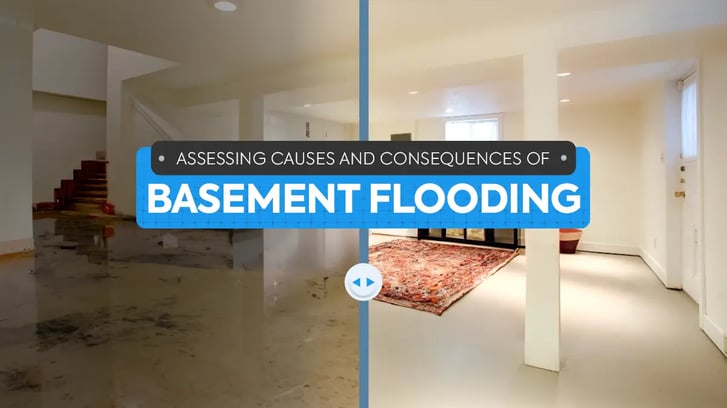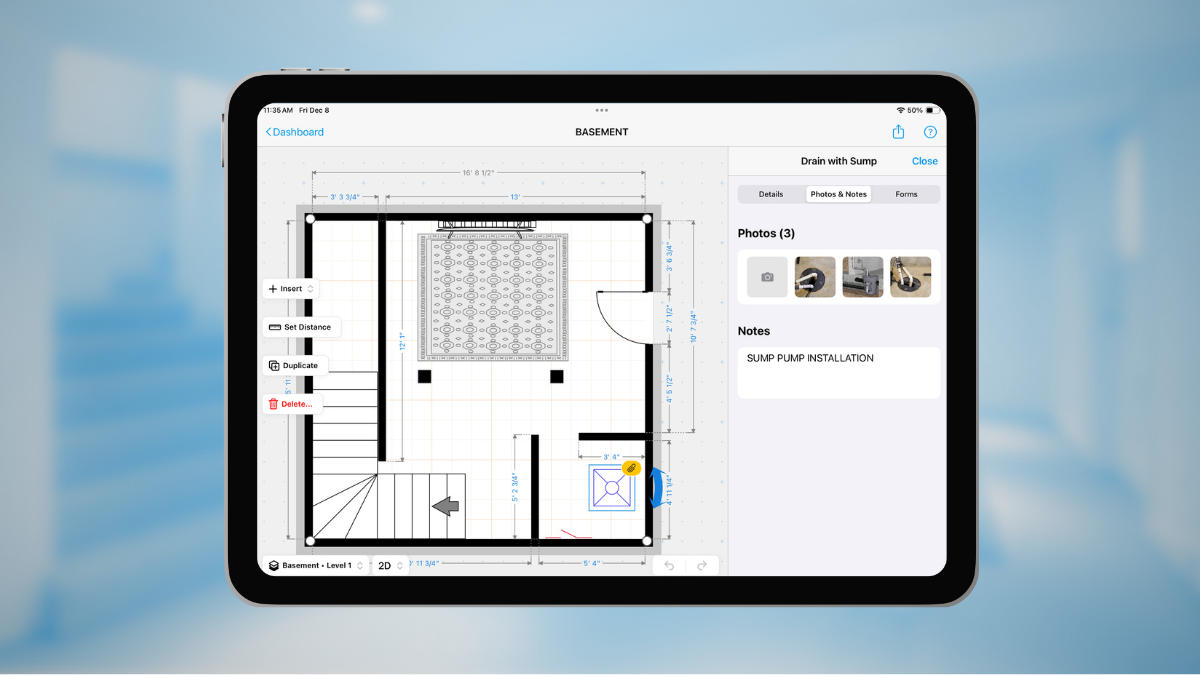Claims Adjuster
Sump Pump Failure Claims: Assessing Causes of Basement Flooding Losses

When you are assigned the task of probing residential sump pump failures, you’ll want to have comprehensive knowledge of possible causes and consequences. This brief article touches on both topics, AND provides pointers for conducting on-site investigations.
Sump Pump Basement Flooding Causes
When a home listing features ‘sump pump in basement,’ home buyers may think that’s adequate protection against basement flooding. Yet, flooding can still occur for a number of reasons. Below, we list some common causes.
Power Outages: The Achilles Heel of Sump Pumps
One of the most prevalent causes of sump pump failures is power outages. When storms or electrical malfunctions disrupt the main power supply, connected sump pumps are rendered ineffective, leaving basements vulnerable to flooding.
Tip: Verify whether or not a local power outage occurred just prior to a sump pump’s failure.
Incorrect Sizing and Installation: Sure Ways to Trigger Problems
A sump pump must be appropriately sized for the specific needs of a property. Here’s why: An undersized pump may struggle to handle excessive water flow during heavy rain or flooding events. Moreover, improper installation, such as incorrect discharge pipe positioning or inadequate sealing, can compromise the effectiveness of the entire system.
Tip: Review the original installation manual for a failed pump, to verify if it was selected and installed correctly, according to the manufacturer’s specifications.
Maintenance Neglect: A Recipe for Disaster
Regular professional maintenance is required for optimal functioning of sump pumps. Over time, dirt, debris and gravel can accumulate in the sump pit and discharge pipe, impeding pumping performance. Also, mechanical components may wear out or become calcified without proper upkeep.
Tip: Scrutinize maintenance records to determine if negligence played a role in the sump pump failure, since this could influence flood insurance claim outcomes.
Winter Weather Events: Melting-Water Mayhem
During wintertime, sump pumps can operate more frequently whenever snow and ice are melting outside. This may lead to freezing, clogging or mechanical overloading, all of which can cause water damage in low-lying areas of homes.
Tip: Study recent weather data and Investigate the exterior of the home to determine if flooding may have played a role.
/1-Dec-08-2023-04-38-09-6876-PM.webp?width=727&height=409&name=1-Dec-08-2023-04-38-09-6876-PM.webp)
An Aging Issue: No Pump Will Last Forever
A sump pump can become worn and less efficient after a few years, just like other mechanical devices.
In fact, even a properly maintained pump can fail due to old age.
Tip: Confirm when the pump was installed to decide if old age may have caused its failure.
Manufacturer Defects: Always a Possibility
Sometimes sump pump failure can happen as a result of a manufacturing error.
Tip: If you have looked into all other possible root causes and still can’t figure out why a pump failed, determine if the unit may be defective.
Consequences of Sump Pump Failures
These unfortunate events can have multiple repercussions.
Structural Damage
When a sump pump fails, water can rapidly infiltrate the home’s basement, causing structural damage to the foundation, walls, and flooring. Even a small amount of water can cause extensive damage. And some of the worst damage may be imperceptible without the use of proper moisture-detection tools.
Mold Infestation
Structural damage not only compromises the integrity of a home, it also creates an environment conducive to mold growth. This insidious invader poses health risks to inhabitants, and adds another layer of complexity to the claims process.
Personal Loss
Homeowners often use basements for storage, housing valuable items such as furniture, electronics, and sentimental possessions. Basement flooding resulting from sump pump failure can lead to irreparable damage to these belongings, resulting in significant financial and emotional losses for homeowners.
Displacement Costs
In severe cases, basement flooding may render a home temporarily uninhabitable. Homeowners forced to evacuate may incur additional expenses for temporary housing, meals, and transportation.
Pointers for Investigating a Sump Pump Failure Insurance Claim
Here are a few more “water damage insurance claim tips” to consider.
Peruse the Policy
As you help a homeowner deal with the aftermath of a flooded basement pump, your natural first step will be to read the wording of their insurance coverage. Home insurance policies often differ with regard to inclusion or exclusion of sump pump failures. Some policies will cover water damage resulting from sudden and accidental pump failures, while others may require a specific rider or endorsement for such incidents. But even an add-on provision might not protect against pump failure if the homeowner did not maintain the pump properly.
Communicate Clearly
Establish an open dialogue with the homeowner by explaining their coverage limitations and exclusions. This step is important for managing expectations and ensuring a smoother claim experience.
Collect Relevant Documents
Ask if the homeowner can provide any paperwork regarding the purchase and installation of the sump pump. This may include product literature and an invoice detailing the installation.
Confirm Due Diligence
Ask if the homeowner can provide proof of adequate sump pump maintenance. Ideally, the proof should be documents showing the pump was regularly inspected and maintained by plumbers in order to avoid operational issues.
Ensure Everyone’s Safety
Determine if all electrical items in the flooded area have been unplugged. If those cannot be accessed safely, the main electrical supply will need to be shut off to allow a contractor to come in and remove standing water.
Perform a Visual Inspection
Once the flooded area is deemed safe, you can begin your inspection. Examine the condition of the failed pump. Determine if it has a backup battery that may have defaulted. Look to see if there’s a backup sump pump that also failed. Then evaluate all areas and belongings that have been affected by flooding water.
Thoroughly Document Your Findings
The best way to complete this step is to use an advanced floor plan app, like magicplan. This type of tool will allow you to:
• Develop and use a custom checklist for your inspection process
• Sketch an accurate, professional-looking floor plan on-site
• Enhance your sketch by adding photos, which serve as helpful visual aids
• Insert annotations and objects to explain your findings
• Create a 360-degree virtual tour of the sump-pump area
• Send your documentation directly to Xactimate® to accelerate the claim process
With the right app, you can complete all of these steps easily and effectively – achieving greater transparency for faster claim resolution!

Collaborate with Experienced Contractors
For example, the observations of a plumber can serve as critical evidence regarding the cause of a pump’s failure. And input from a restoration professional can help you gauge the cost of needed repair work.
Conclusion
You play a pivotal role in helping homeowners recover from sump pump failures. By understanding the possible causes and consequences of these unfortunate events – and then conducting and documenting thorough investigations – you can elevate your effectiveness in handling these complex cases.
READ MORE:
Related articles

Zuzanna Geib
Team Lead Marketing

